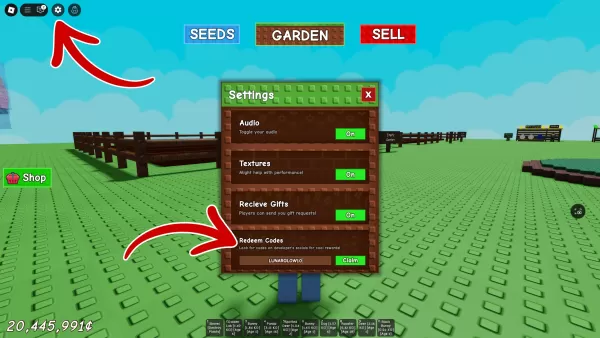Path of Exile 2: Mastering FilterBlade Usage
For anyone seriously tackling the endgame in Path of Exile 2, setting up a suitable loot filter is practically a necessity. Loot filters not only reduce on-screen clutter to make mapping more enjoyable but also streamline your gameplay by highlighting only the items that truly matter, saving you the mental effort of sorting through irrelevant drops.
FilterBlade, renowned as the go-to filter manager for Path of Exile 1, now extends its support to PoE 2 with its latest update. Here’s a step-by-step guide on how to set it up for an enhanced gaming experience.
How to Set Up FilterBlade Loot Filters in Path of Exile 2
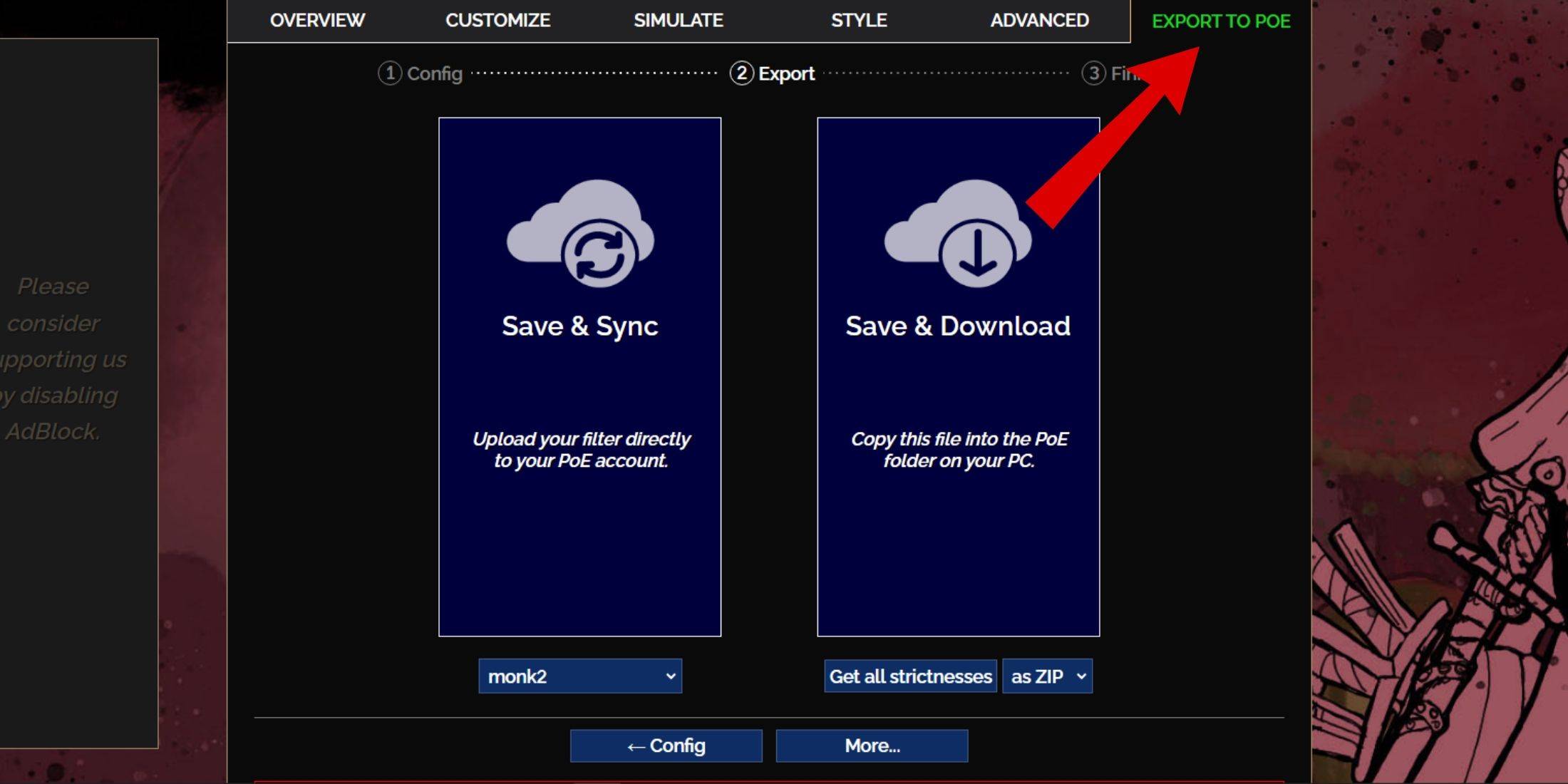
- Navigate to the FilterBlade website.
- Choose PoE 2 from the available options.
- The default loot filter, NeverSink, will be pre-selected.
- Adjust the Strictness level using the slider provided (more details on this below).
- Head to the 'Export to PoE' tab located at the top right.
- Enter a name for your filter; it can be anything you prefer.
- Choose either 'Sync' or 'Download' at the bottom right:
- 'Save & Sync' will automatically upload the FilterBlade loot filter to your PoE 2 account, ensuring any updates from the author are directly applied to your game.
- 'Save & Download' lets you save the file on your PC, which is useful for comparing different Strictness levels without needing to re-sync or at the start of a new campaign.
- Launch PoE 2 and go to Options > Game.
- If you opted for Sync, select the new FilterBlade from the Item Filter dropdown.
- If you chose Download, use the folder icon next to the dropdown to locate and select your downloaded filters.
And just like that, your FilterBlade loot filter is now operational in your game!
Which Loot Filter Strictness Should You Choose?
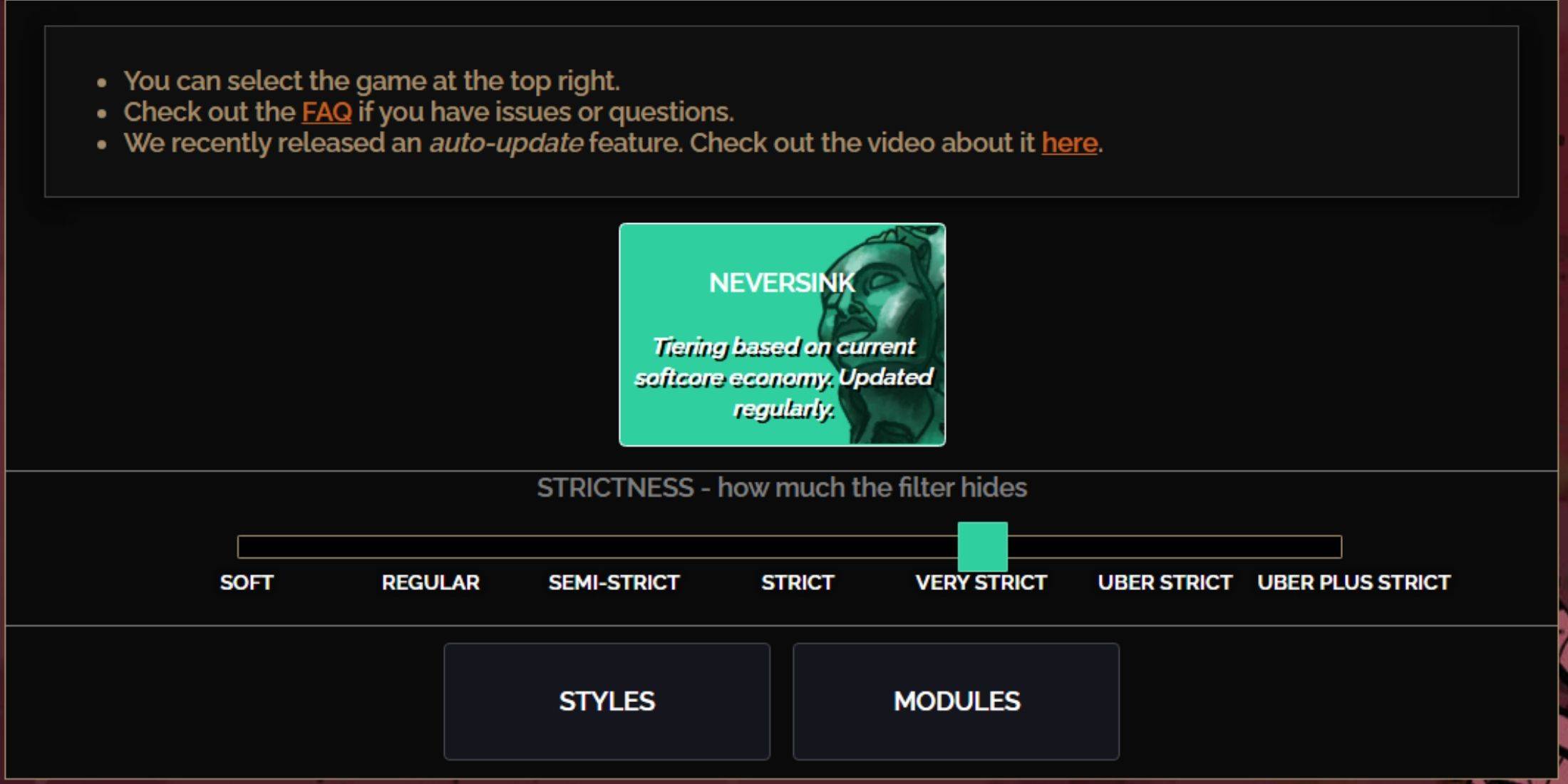
Choosing the right strictness level for the NeverSink FilterBlade preset is crucial, as it directly affects what items you'll see in-game. Here's a breakdown of the seven strictness levels:
| Strictness | Effect | Best For |
|---|---|---|
| Soft | Only highlights valuable materials and items. Doesn't hide anything. | Act 1-2 |
| Regular | Hides only useless stuff with no crafting potential/sale value. | Act 3 |
| Semi-Strict | Hides the items with low potential/limited value. | Act 4-6 |
| Strict | Hides most items without a high turnover. | Early Mapping phase (Waystone Tier 1-6) |
| Very Strict | Hides all low-value rare items and crafting bases. Also hides Waystone Tier 1-6. | Mid to late mapping phase (Waystone Tier 7+) |
| Uber Strict | Hides almost all non-tiered rare items and crafting bases. Mainly highlights complete currency like Regal/Alchemy/Exalted/Chaos Orbs, no shards. Also hides Waystones Tier 1-13. | Late mapping phase (Waystone Tier 14+) |
| Uber Plus Strict | Hides almost everything other than valuable currencies and high return rares and uniques. Also hides Waystones Tiers 1-14. | Ultra endgame mapping phase (Waystone Tier 15-18) |
For players running through the campaign multiple times with a new character, starting with the Semi-Strict level is advisable. Soft and Regular Strictness levels are ideal for new, fresh league starts where every item contributes to character progression, similar to a Solo Self-Found (SSF) run.
To view items hidden by the loot filter, press the highlight key (ALT on PC). FilterBlade also features an innovative approach where, depending on the strictness level, pressing ALT reveals items but reduces the size of their names to minimize on-screen clutter.
How to Customize FilterBlade Loot Filter in PoE 2
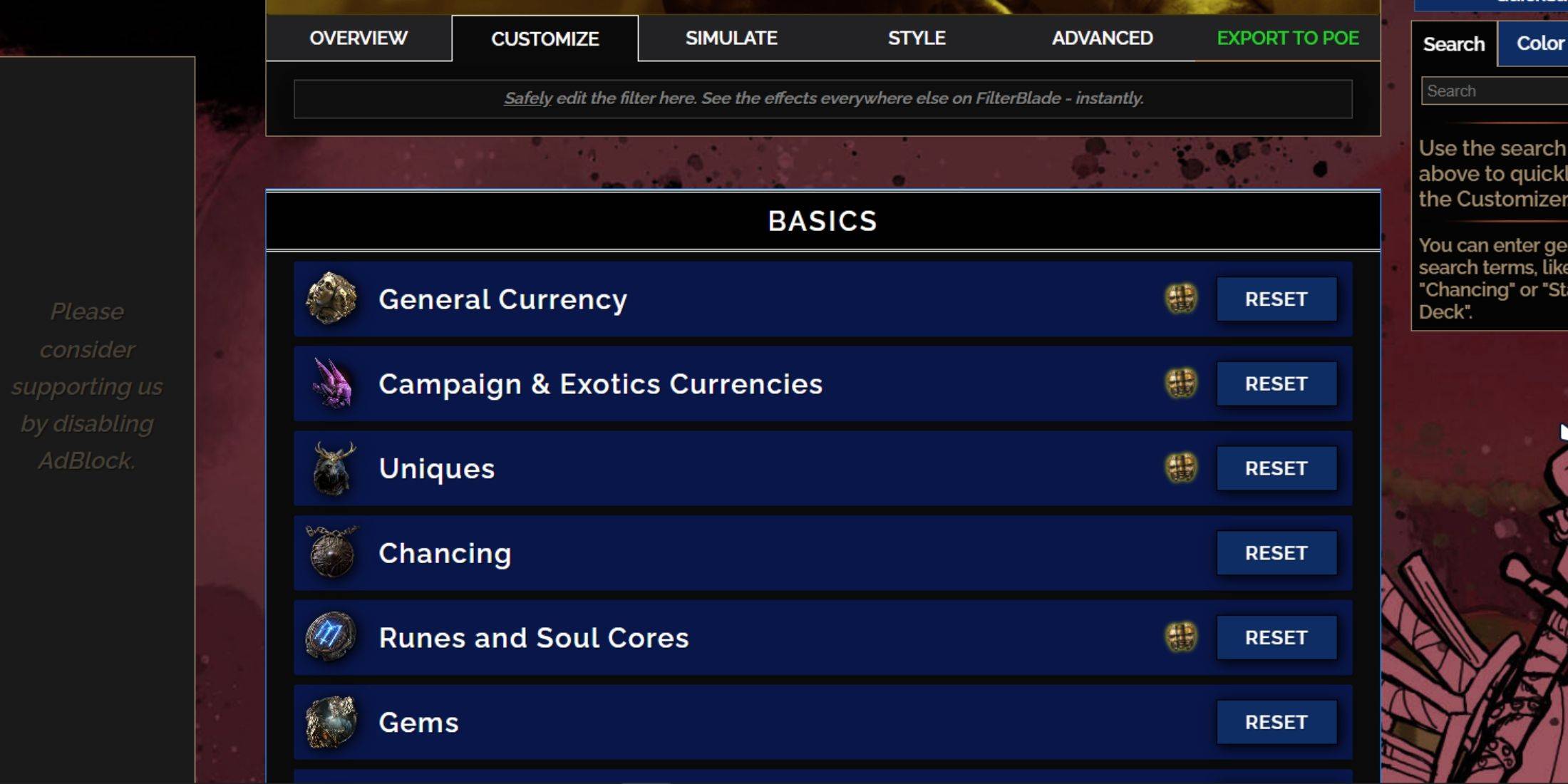
FilterBlade's strength lies in its ease of customization, allowing you to modify a preset loot filter without delving into complex code.
How to Use the Customize Tab in FilterBlade
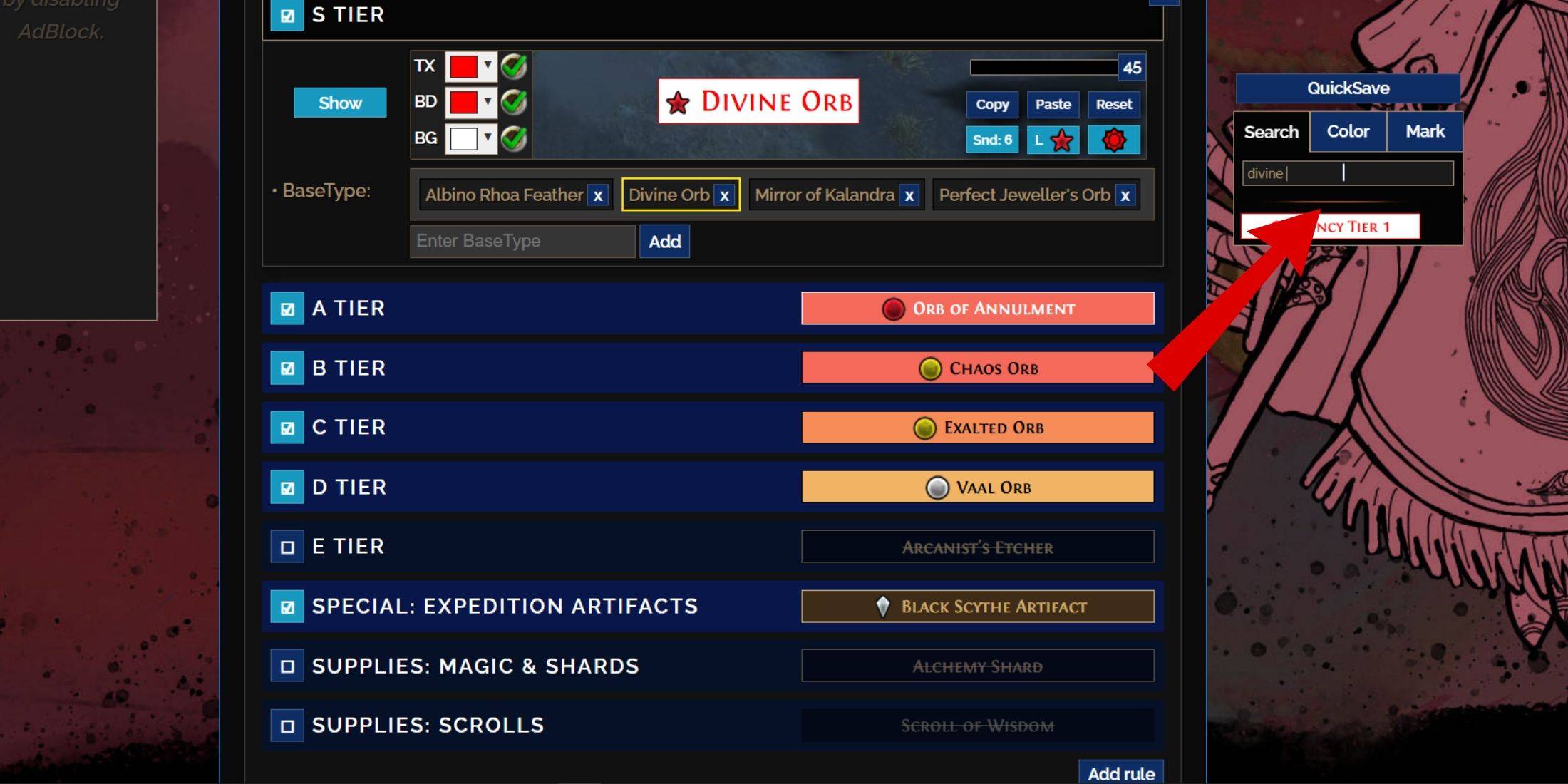
For detailed customization, navigate to the 'Customize' tab next to Overview. Here, every possible drop in PoE 2 is categorized into sections and subsections for easy modification.
For instance, if you want to alter how a 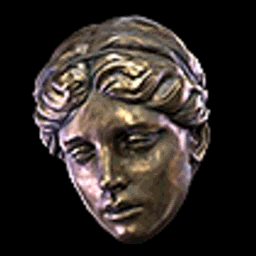 Divine Orb appears when it drops, simply enter 'Divine Orb' into the search bar on the right. This will open the S Tier General Currency tab, displaying all customization options for the Divine Orb with real-time visual feedback.
Divine Orb appears when it drops, simply enter 'Divine Orb' into the search bar on the right. This will open the S Tier General Currency tab, displaying all customization options for the Divine Orb with real-time visual feedback.
To preview the in-game sound of an item dropping, click the in-game showcase icon.
How to Change Colors and Sounds in FilterBlade
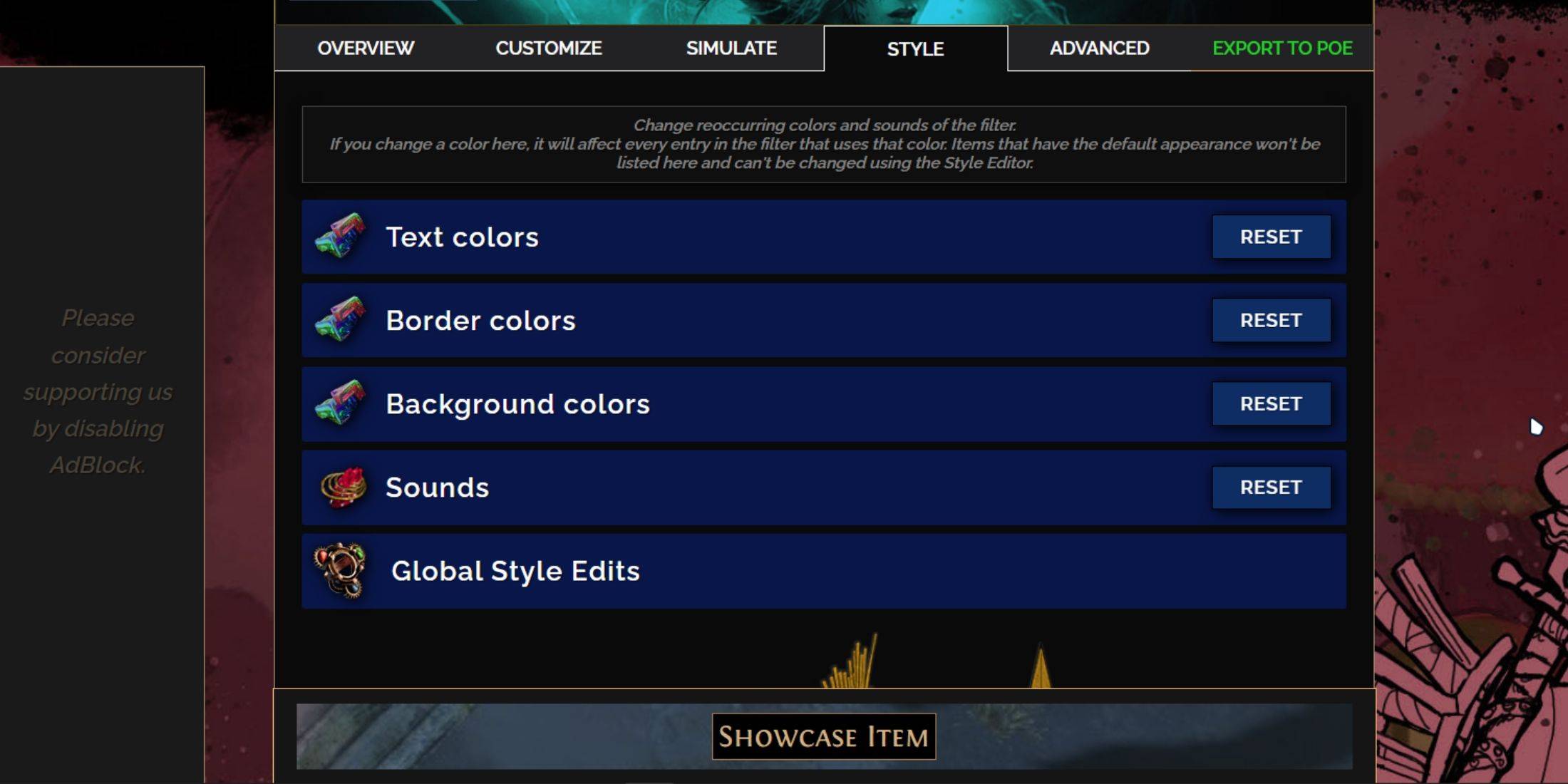
To change the colors and sounds of individual or small groups of items, use the 'Customize' tab. For broader, filter-wide changes, switch to the 'Styles' tab, where you can modify the Text, Border, Background, and audio cues for valuable drops.
Color adjustments are straightforward, with real-time previews available. For individual item customization, return to the 'Customize' tab.
Sound effects can be modified using the drop-down menu. Players can upload custom sounds in .mp3 format or choose from an extensive library of community-added sounds. Don't hesitate to experiment; you can always revert changes by selecting 'Reset.'
For those new to loot filter customization, exploring public Modules—community-made presets that alter the loot filter—can be a great starting point for visual or auditory enhancements.
-
Make Starlight Island your personal paradise with full customization optionsMemory Island acts as the welcoming area for new Starlight Island visitorsMeet the newest addition: Special Marshmallow Bunny CookieCookie Run: Kingdom welcomes summer with aAuthor : Aurora Nov 14,2025
-
Video games should deliver enjoyment and satisfaction to players. This emotional fulfillment often comes from stunning visuals, engaging narratives, unique gameplay elements, or even promotional rewards like redeemable codes.Zenless Zone Zero (ZZZ) fAuthor : Noah Nov 14,2025
-
 Jackpot Slot GameDownload
Jackpot Slot GameDownload -
 Original SlotsDownload
Original SlotsDownload -
 4 картинки - Угадай словоDownload
4 картинки - Угадай словоDownload -
 Thot on TrialDownload
Thot on TrialDownload -
 Tabula -Tabu Kelime Oyunu 2024Download
Tabula -Tabu Kelime Oyunu 2024Download -
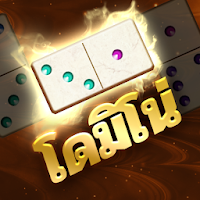 โดมิโน่สยาม - Domino SiamDownload
โดมิโน่สยาม - Domino SiamDownload -
 Lucky SurpriseDownload
Lucky SurpriseDownload -
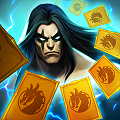 Aftermagic - Roguelike RPGDownload
Aftermagic - Roguelike RPGDownload -
 Fruit Memory by Beat the OddsDownload
Fruit Memory by Beat the OddsDownload -
 Fruit ShowDownload
Fruit ShowDownload
- Black Ops 6 Zombies: How To Configure The Summoning Circle Rings on Citadelle Des Morts
- Harvest Moon: Lost Valley DLC and Preorder Details Revealed
- Roblox: Latest DOORS Codes Released!
- Silent Hill 2 Remake Coming to Xbox and Switch in 2025
- Roblox: Blox Fruits Codes (January 2025)
- Roblox: Freeze for UGC Codes (January 2025)


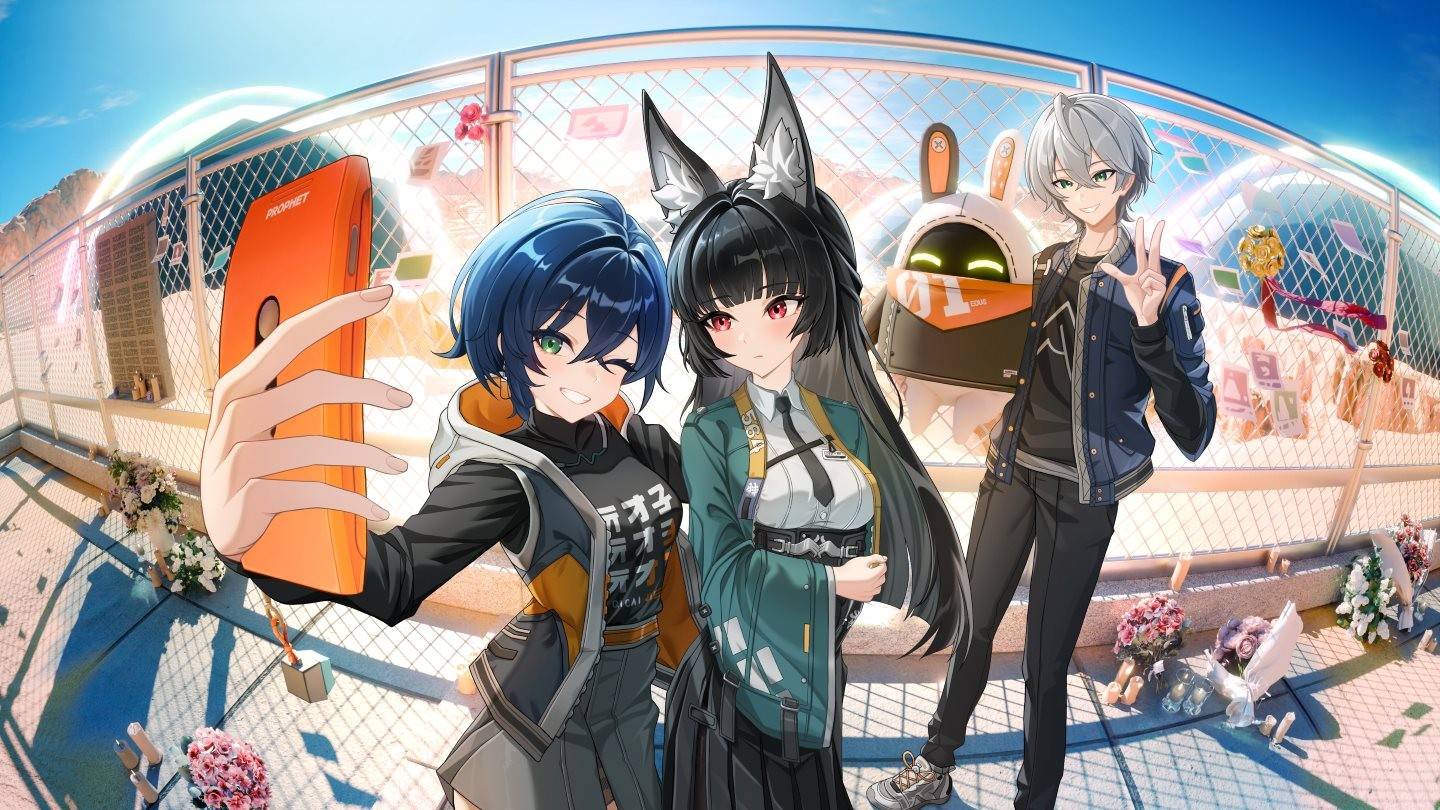

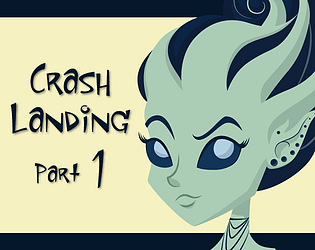



![Taffy Tales [v1.07.3a]](https://imgs.ehr99.com/uploads/32/1719554710667e529623764.jpg)



